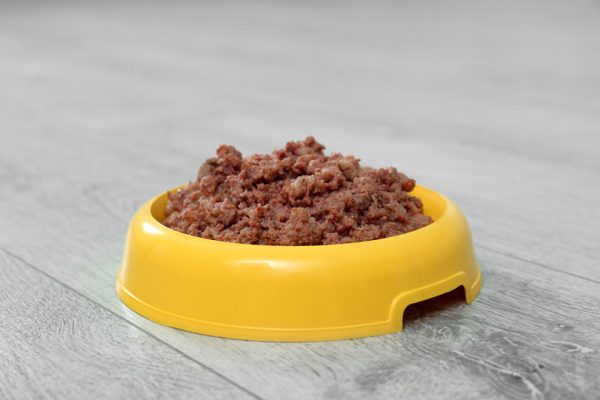The Havanese is a happy-go-lucky type of dog. Classified as a toy breed, the Havanese weighs up to 13 pounds and stands 11 inches tall when fully grown. These are energetic little dogs, though they need just a fraction of the exercise that most larger dog breeds require.
Breed Overview
Height:
8 ½ –11 ½ inches
Weight:
7–13 pounds
Lifespan:
13–16 years
Colors:
Chocolate
Suitable for:
Families with children, singles, seniors
Temperament:
Affectionate, loyal, intelligent, sociable, playful
These outgoing dogs tend to be good with kids and typically get along well in social situations. They come in all colors and combinations of colors, including chocolate. If you’re wondering about the history and facts of the Chocolate Havanese, you’ve come to the right place!
Chocolate Havanese Breed Characteristics

The Earliest Records of the Chocolate Havanese in History
What we know about Havanese history is a mixture of fact and theory. It has been established that the Havanese originated in Cuba sometime in the 1800s1. It’s thought that they are descended from the Blanquito de la Habana, which is likely a relative of Spanish water dog breeds.
After the Spanish water dogs arrived in Cuba, the breed adapted to the environment, available food sources, and climate. As time went on, the breed transformed into a smaller version of the breed that was completely white and was referred to as the Blanquito de la Habana.
Poodles were introduced to Cuba in the 19th century, at which time, they were bred with the Blanquito de la Habana. The result was a small dog breed that came in various colors and patterns and that had a long, silky coat. These dogs were called the Havanese.
The Chocolate Havanese came into existence when the Poodles and Blanquitos de la Habana were bred together, just like all the other coat colors of this breed, though they were extremely rare. The chocolate variation of Havanese is thought to exist due to a genetic mutation that happens during the cross-breeding process.
These dogs, including the chocolate ones, made their way to other parts of the world, including the United States during the Cuban Revolution.

How the Chocolate Havanese Gained Popularity
The Havanese gained popularity in Cuba among the population as they became increasingly prominent. The Chocolate Havanese became popular right away, as they were such a contrast to their lighter-colored Spanish water dog relatives.
These dogs were considered companion pets just as they are today. However, their popularity took a dive in the 20th century, probably because other breeds started to gain in popularity. Today, though, they are well-known among households throughout the world.
Formal Recognition of the Chocolate Havanese
The Havanese did not earn recognition by any clubs or organizations until the 1990s when two organizations officially recognized them. First was the United Kennel Club in the U.K., which recognized the breed in 19912. Then, the American Kennel Club in the United States recognized them in 19963. Both official clubs accept the chocolate coat.

Top 6 Unique Facts About the Chocolate Havanese
There are many interesting things to learn about the Havanese dog breed as a whole, not just the chocolate variety. However, any fact about standard Havanese covers the chocolate-colored cuties too. Here are a few facts that you should know.
1. The Havanese Is the National Dog of Cuba
The Havanese is the only dog that is native to Cuba and is established as the official National Dog of Cuba today. These dogs still enjoy popularity in the region, even if they do have competition with other non-native dog breeds that have made their way to Cuba.
2. These Dogs Are Known for Their Outgoing Personalities
The average Havanese is friendly, outgoing, social, and cheerful. They tend to get along with other living creatures, from pet cats and birds to kids and adults. Most people who spend time with this breed never forget their outgoing personality.

3. They Are Known by a Few Different Names
This dog has a rich background of ancestors, so they have acquired several different names over the years, such as Havanese Cuban Bichon, Bichon Havanese, Havanese Silk Dog, Bichon Habanero, and even Havanezer. The name that a dog of this breed goes by depends on where in the world they live.
4. They Once Almost Went Extinct
Unfortunately, the Havanese almost went extinct during the Cuban Revolution. It’s not known exactly why. What is known is that a few Cubans who fled to the United States were able to smuggle 11 Havanese with them.
From there, breeders took an interest and started breeding programs to bring the breed back to prominence.

5. Havanese Do Best in Warm Weather
Although this dog breed has long, luxurious hair, they are best suited for warm weather climates due to their origins. They may have double coats, but they are not built to be insulated against the cold. They cannot live outdoors in cold weather.
6. These Dogs Are Prone to Separation Anxiety
The Havanese are known for getting separation anxiety when they are left at home alone too often. These extremely affectionate dogs yearn for the attention of their human companions. They want to be by their owner’s side as often as possible, and when they feel neglected, separation anxiety and even feelings of depression may set in.

Does the Chocolate Havanese Make a Good Pet?
The Havanese can make an excellent pet for family households of almost all shapes and sizes. They can get along well in apartments and houses, and they don’t require more than about 30 minutes of exercise each day, which is convenient for busy families.
They enjoy outdoor adventures and traveling, though, and they typically don’t mind living with other pets. One word of warning is that these dogs can get nippy with young children who don’t understand how to properly interact with them.

Conclusion
The Havanese dog breed has a rich history and an interesting background. The chocolate Havanese has been around as long as the other colored versions, and they have always been just as popular. That said, they’re a bit rare, so you’ll need to do research before looking at quality breeders or animal shelters.
Featured Image Credit: Christian Mueller, Shutterstock



















